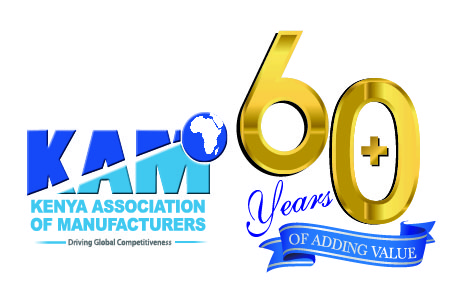Securing our future: the path to net-zero
By Tobias Alando
Accelerating the transition to energy efficiency and conservation is one of the surest ways of securing the future of our planet for generations to come. This is because, energy is at the heart of climate change.
For us to achieve any substantial and long-lasting economic impact for Kenya, we must position affordable and efficient use of energy, among other green growth initiatives, at the centre of our development discourse.
The global manufacturing landscape is undergoing profound transformation. This is characterized by technological innovations geared towards process efficiency and resource recovery, use of alternative clean energy sources, impact-centred global agreements and policies, and responsible production and consumption as we shift to a circular economy.
Energy efficiency is one of the key pillars of reaching net-zero emissions. Additionally, it is one way of driving competitiveness whilst enhancing technological innovation. According to the United Nations, fossil fuels, such as coal, oil and gas, are by far the largest contributor to global climate change, accounting for over 75 percent of global greenhouse gas emissions and nearly 90 percent of all carbon dioxide emissions. To avoid the impact of climate change, we need to reduce emissions by almost half by 2030 and reach net-zero by 2050. Therefore, energy being at the heart of the discourse on climate change, is also a solution to the crisis we are currently facing as a planet.
Kenya is strong in renewable energy space with over 90% contribution to the National Grid. However, we need to take this further by harnessing the full value of renewable energy through conversion to hydrogen for storage, fertilizer and thermal systems for cement, glass and steel industries.
At Kenya Association of Manufacturers (KAM) we continue to engage our Members on sustainable manufacturing practices, towards achieving a green economy. We realize this through our Centre for Green Growth and Climate Change (CGGCC) and Centre for Energy Efficiency and Conservation (CEEC). CGGCC promotes circular economy, climate change actions, and financial linkages. The Centre prioritizes people, the planet, and profit to improve the manufacturers’ bottom-line while preserving the environment for future generations. On the other hand, CEEC runs energy efficiency and conservation programs designed to help companies identify energy wastage, determine saving potential and give recommendations on measures to be implemented.
CEEC also hosts the annual Energy Management Awards (EMA), to celebrate manufacturers who have made significant energy savings through efficiency and conservation. This year’s edition of EMA was held on 8th July 2022 and celebrated the pathway to net zero. Kenya Breweries Ltd, Nairobi emerged the overall winner, having recorded the most energy savings in their operations.
Government has also been instrumental in driving green growth. For instance, the Energy Act 2019 promotes renewable energy, and regulates transmission charges with the aim of lowering electricity tariffs.
During COP26 held in Glasgow, His Excellency the President of Kenya, Uhuru Kenyatta noted that consumers are now demanding for carbon-neutral products, and this is set to transform conservation finance in Africa, by compensating the continent for storing carbon and tackling climate change. Green technologies are key to reducing pollution and waste by minimizing natural resource use, recycling, and reusing waste, and reducing emissions, which is key for the sustainability of manufacturing. Sustainable and green practices help organizations become more efficient, competitive, and profitable.
With COP27 taking place in Africa, we have an opportunity to showcase our investment potential for clean and renewable energy. This entails a stable energy structure, political environment and financial market.
For manufacturers, energy cost and availability have always been central to industrial growth and consequently, sustained economic development for many countries around the world. To keep up, industry is taking its space in transitioning to green and sustainable manufacturing. Notable areas of interest are captive solar, energy efficiency, water efficiency and circular economy and keeping track of carbon emissions through monitoring and assessment.
The writer is the Ag. CEO of Kenya Association of Manufacturers can be reached at ceo@kam.co.ke.
Looking for elevation? KAM lifts you up.
- Direct technical assistance
- Capacity building programmes
- Networking and mentorship
- Industry insights & analysis
- Trade & export development services
